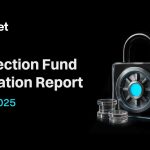The USD/JPY pair has gained over 0.30% in recent days, driven by comments from Fed Chair Jerome Powell indicating that rate cuts will only be considered if disinflation progress is made. The pair currently trades at 161.77, approaching the year-to-date high of 161.95. However, technical analysis suggests that resistance may be found near the 162.00 mark, with the RSI nearing overbought conditions, potentially hindering further bullish movements in the USD/JPY exchange rate.
If the USD/JPY manages to break above the 162.00 resistance level, the next area of resistance to watch out for would be at 163.00, followed by the November 1986 high of 164.87. On the other hand, a bearish scenario could unfold if prices fall below the Tenkan-Sen level at 161.10, leading to a potential pullback to support levels at 160.73 (July 9 low) and 160.26 (July 8 low). A further drop below these levels could push the USD/JPY towards 160.00 and below.
The Japanese Yen (JPY) is influenced by various factors such as the performance of the Japanese economy, the policies of the Bank of Japan, the yield differentials between Japanese and US bonds, and overall risk sentiment in the markets. The BoJ has at times intervened in currency markets to control the value of the Yen, often to lower its value. The current ultra-loose monetary policy of the BoJ, driven by massive stimulus efforts, has led to a depreciation of the Yen against major currencies, especially due to policy divergence with other central banks like the Federal Reserve.
The policy divergence between the BoJ and other central banks, particularly the Fed, has widened the interest rate differential between US and Japanese bonds, favoring the US Dollar against the Japanese Yen. The Yen is often considered a safe-haven investment during times of market turmoil, as investors tend to seek the stability and reliability of the Japanese currency. This safe-haven status can lead to strength in the Yen’s value compared to riskier currencies during turbulent market conditions.
Overall, the USD/JPY pair continues to show an upward trend, supported by Powell’s stance on rate cuts and technical analysis pointing to potential resistance levels. Traders should monitor key levels of support and resistance, as well as keep an eye on broader market factors influencing the movement of the Japanese Yen. Economic data releases, central bank announcements, and geopolitical events can all impact the USD/JPY exchange rate, making it essential for traders to stay informed and adapt their strategies accordingly.





















